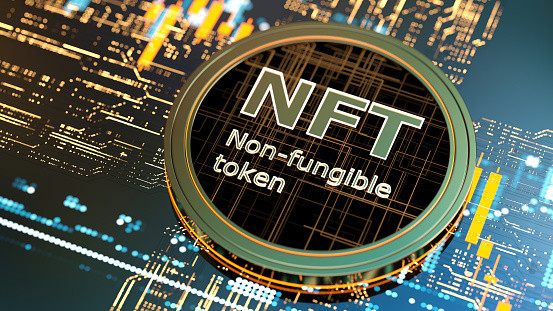Why The NFT Art Craze Obscures The True Value Of NFT Technology
Ask the average consumer what a non-fungible token (NFT) is, and you're likely to receive a wide range of responses. Despite what slick-talking NFT influencers tell you, a still-popular reply will be, "I don't know." Another substantial percentage of respondents will answer along the lines of, "NFTs, hmm, aren't they cartoon images you can prove that you own?"
They've only been around for a short while, but most of the headlines generated by NFTs are related to their use in digital art auctions via collections like CryptoPunks, Bored Ape Yacht Club, CryptoKitties and CloneX. Not all NFTs are art, of course, but this preponderance of "NFT artworks" could easily convince the man on the street that the tech functions as a digital doodle board for illustrators, offering creators a novel new way to monetize their work.
However, there is so much more to NFT technology than the art craze suggests. Indeed, while the popularity of NFT collections has been a boon for the Web3 industry as a whole, it somewhat obscures the ultimate selling point of the tokens themselves.
NFT Art vs. Art NFTs
Is it nice to have a piece of digital art you can hold in your crypto wallet? Sure — at least some people think so. But beyond the art world, NFTs are contributing to revolutionary changes in many industries, from music, gaming and trade to logistics, identity management and fashion.
The beauty of NFTs, as anyone operating in the field will know, is their ability to confer digital scarcity and proof of ownership. No two NFTs are the same. And it's because of these properties that major brands — Microsoft, Nike, Coca-Cola, Gucci and others — have launched their own NFT projects. They are highly valuable and collectible by nature.
The Beauty of Provable Ownership
But let's get back to art for a second. Because there's a difference between NFT art — the digital artworks mentioned above — and art NFTs. The former describes digital works stored on the blockchain and sold as tokens. They can be anything from digitally-rendered paintings to 3D animations and avatars, and their price can range from a few bucks to millions of dollars. The most expensive one, Beeple's "The First 5,000 Days," sold for a whopping $69 million in 2021, propelling him into the pantheon of the world's richest living artists.
So, what are art NFTs? In a nutshell, they are NFTs that represent ownership of artworks in the real world. If NFTs provide validation of ownership via blockchain, what better application of them than in the traditional art world, where there is a universal need to prove that physical works are authentic? And it goes beyond art, too. The technology underlying NFTs allows for many real-world assets to be tokenized, with the token proving ownership of the asset itself, be it a house, car, yacht, wristwatch or anything else.
Gradually, the industry is moving beyond the NFT art movement and exploring art NFTs. On NFT marketplace OpenSea, which is awash with digital art, you can buy the real thing — physical paintings shipped straight to your door. As one artist's bio reads, "All of the NFTs in this collection will include unlockable content with the email address/twitter account to send your delivery address details to receive the physical artwork."
NFTs aren't just a shot in the arm for the digital art world, then, but for the art sector more broadly. Because they can be easily tracked and transferred quickly to others, they are almost tailor-made for use in this field, giving artists another option other than working with traditional brick-and-mortar auction houses.
The Revolutionary Potential of NFTs
While the NFT art craze has been undoubtedly exciting, the hype cycle at its heart distracts people from the true appeal of NFT technology. After all, NFTs have the potential to revolutionize many industries beyond just art.
For example, they can be used to tokenize ownership of physical assets, as mentioned earlier (homes, cars, luxury goods, etc). They can represent fractional ownership of high-ticket items that would otherwise be unaffordable (see Tessera), allowing for multiple people to have ownership over singular assets with a high value. They can also be leveraged to create digital scarcity for commodities like digital goods in virtual gaming environments. The possibilities are endless, and the true value of NFTs has yet to be fully realized.
Another use case for NFTs is in the realm of online content creation. For instance, a popular YouTuber or Twitch streamer might offer followers the chance to buy exclusive NFTs, granting them access to new content or personalized perks. This would give the creator a way to directly monetize their fanbase, while also providing supporters with a way to show their support in a tangible way.
Although it's easy to get lost in the hype and endlessly celebrate the strides made by digital artists (although let's be honest, some digital art/cartoons have precious little artistic merit), it's important to remember that NFTs have much greater potential. When used correctly, they can bring game-changing opportunities for creators, businesses and entire industries — including the traditional art world.
In the future, perhaps the title deeds to your home will be tokenized, along with an NFT verifying that the car in the driveway is actually yours. By then, the idea that NFTs were once almost exclusively associated with cartoons will seem positively hilarious.
(Asif Kamal is the Founder and CEO of Artfi, a tokenization platform for real-world assets.)

© Copyright IBTimes 2024. All rights reserved.




















